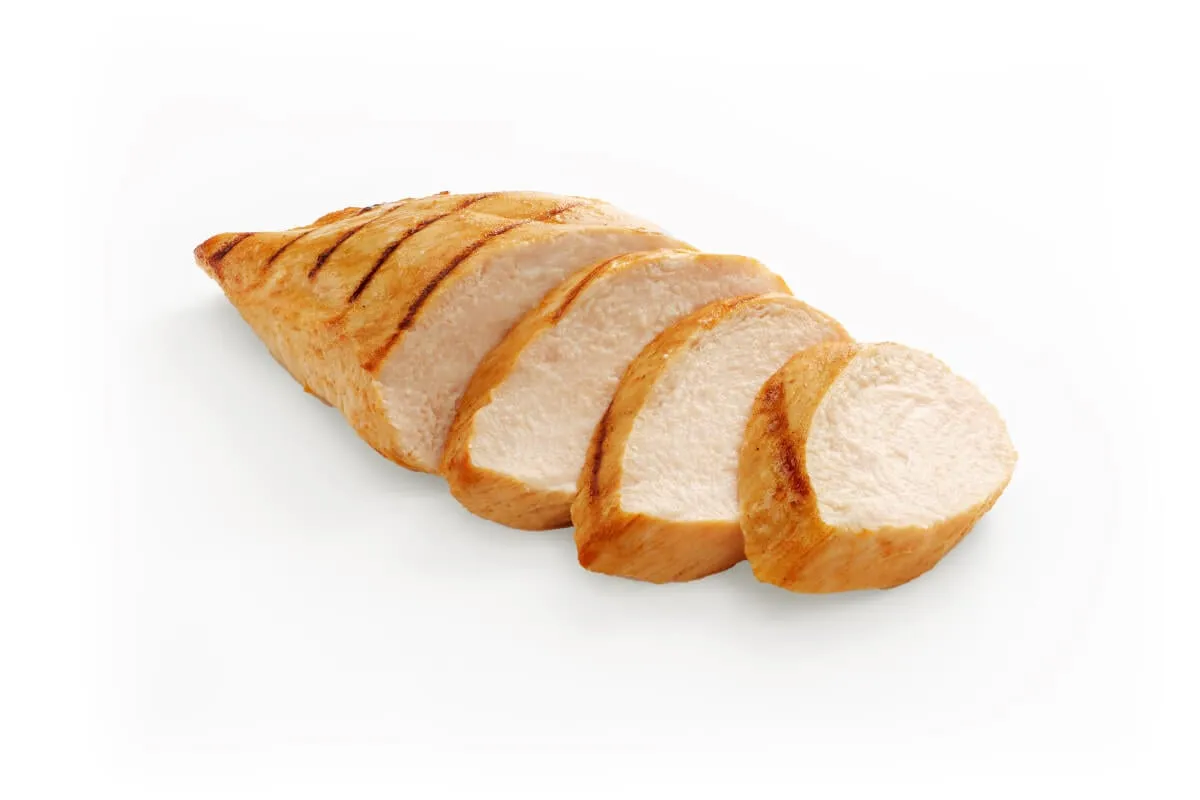Welcoming a small breed dog into your home brings immense joy, but it also comes with unique responsibilities, especially when it comes to their diet. Small dogs, typically weighing under 20-25 pounds, have a different metabolism and higher energy requirements per pound of body weight compared to their larger counterparts. This means that selecting the right Small Breed Dog Food is crucial for their overall health, vitality, and longevity. A diet specifically formulated for their needs can help prevent common health issues and ensure they thrive.
Understanding these distinct needs is the first step in providing optimal nutrition. Small breed dogs often have faster metabolisms, smaller mouths and stomachs, and can be prone to certain health conditions such as dental problems, obesity, or sensitive digestion. Therefore, their food must be calorie-dense, easy to chew, and packed with high-quality nutrients.
Understanding the Unique Nutritional Needs of Small Breed Dogs
Small breed dogs burn calories at a much faster rate than larger breeds, requiring a more concentrated energy source in their diet. Their compact size also means they have smaller jaws and teeth, making kibble size a significant factor in their ability to chew and digest properly. Additionally, some small breeds are predisposed to conditions like patellar luxation or tracheal collapse, highlighting the importance of supportive nutrients.
A well-formulated small breed dog food addresses these considerations by providing:
- Higher Calorie Density: To meet their rapid metabolism without overfeeding.
- Appropriate Kibble Size: Smaller kibble is easier for tiny mouths to pick up and chew, aiding digestion and reducing choking hazards.
- Specific Nutrient Ratios: Balanced proteins, fats, and carbohydrates tailored to their energy needs.
- Dental Health Support: Smaller kibble can also help reduce plaque and tartar buildup through mechanical abrasion.
Key Ingredients for Optimal Small Breed Dog Food
When evaluating small breed dog food options, focusing on the quality and type of ingredients is paramount. A truly beneficial formula will start with premium protein sources and include a balanced mix of wholesome grains, healthy fats, and antioxidant-rich fruits and vegetables.
Protein Power for Active Small Dogs
High-quality protein is the cornerstone of any dog’s diet, especially for active small breeds. Protein supports muscle development, energy levels, and overall vitality. Look for formulas that list real meat as the first ingredient. Chicken is a popular choice, providing essential amino acids crucial for maintaining lean muscle mass. Menhaden fish meal also offers a concentrated protein source, contributing to muscle development and sustained energy throughout their day.
 A close-up image of cooked chicken pieces, highlighting a primary protein source in dog food
A close-up image of cooked chicken pieces, highlighting a primary protein source in dog food
Wholesome Carbohydrates for Sustained Energy
Complex carbohydrates provide sustained energy for your small dog’s active lifestyle. Ingredients like brown rice are excellent choices, offering natural whole grains that supply essential B vitamins, minerals, and high-quality complex carbohydrates. These contribute to stable energy levels, preventing energy crashes and supporting overall canine health.
Essential Fats for Skin & Coat Health
Healthy fats are vital for a shiny coat, healthy skin, and provide a concentrated source of energy. Flaxseed is a superior ingredient, rich in essential Omega-3 fatty acids, which not only promote a healthy skin and coat but also aid in digestion due to its fiber content. These fats play a critical role in cellular function and inflammation management. For more insights into specialized diets, you might want to read an orijen small breed dog food review.
Antioxidant-Rich Fruits & Veggies
To bolster your small dog’s immune system and combat oxidative stress, ingredients rich in antioxidants are indispensable. Blueberries and cranberries are prime examples, packed with vitamins C and E, potassium, fiber, and manganese. These ingredients support overall cellular health and contribute to a robust immune response.
 Close-up of fresh, ripe blueberries, an ingredient known for its antioxidant properties
Close-up of fresh, ripe blueberries, an ingredient known for its antioxidant properties
Joint Support
While often associated with large breeds, joint health is also important for small dogs, especially as they age or if they have genetic predispositions. Ingredients like glucosamine, a natural compound found in connective tissue, can be beneficial for supporting joint health and mobility. While not always a primary concern for young small breeds, its inclusion can offer proactive support. Exploring options like rachael ray small breed dog food reviews can offer additional perspectives on ingredient benefits.
The Role of Antioxidants and Vitamins: LifeSource Bits
Many premium small breed dog food formulas go beyond basic ingredients by incorporating specialized blends of nutrients. For example, some brands feature “LifeSource Bits”—a precise blend of antioxidants, vitamins, and minerals carefully selected by veterinarians and animal nutritionists. These bits are formulated to support immune system health, meet specific life stage requirements, and promote a healthy oxidative balance.
A key aspect of these specialized components is their processing. Often, they are cold-formed to help retain the potency of heat-sensitive ingredients. This minimal heat exposure during manufacturing helps preserve the integrity and effectiveness of crucial nutrients, similar to how gentle cooking methods retain more vitamins in vegetables. This dedication to nutrient preservation enhances the overall benefit of the food.
 A graphic illustrating "LifeSource Bits" which are small, dark kibble pieces mixed with larger, lighter kibble
A graphic illustrating "LifeSource Bits" which are small, dark kibble pieces mixed with larger, lighter kibble
What to Look for: The “True BLUE” Promise for Small Breeds
When selecting a small breed dog food, beyond the individual ingredients, consider the brand’s overall philosophy. A “True BLUE Promise” often signifies a commitment to natural, wholesome ingredients and the exclusion of potentially harmful additives. This typically includes:
- Real Deboned Meat as the First Ingredient: Ensuring a high-quality protein foundation.
- No Chicken (or Poultry) By-Product Meals: Avoiding less digestible or lower quality protein sources.
- No Corn, Wheat, or Soy: Eliminating common allergens and fillers that offer little nutritional value.
- No Artificial Flavors or Preservatives: Relying on natural preservation and flavor enhancers.
This commitment reflects a focus on purity and quality, which is vital for the sensitive systems of small dogs. For those looking for healthy weight management, considering small breed healthy weight dog food options is also crucial.
 A graphic displaying shields with "True BLUE Promise" and key commitments like "Real Deboned Chicken First Ingredient" and "NO Chicken By-Product Meals"
A graphic displaying shields with "True BLUE Promise" and key commitments like "Real Deboned Chicken First Ingredient" and "NO Chicken By-Product Meals"
Feeding Guidelines for Your Small Dog
Proper feeding is as important as the food itself. Small dogs can easily become overweight if overfed, leading to other health complications. Always follow the feeding guidelines provided by the manufacturer, but remember that individual requirements can vary based on age, breed, environment, and activity level. It’s always best to monitor your dog’s body condition and adjust food portions as needed. If you’re unsure, consulting your veterinarian is highly recommended.
For example, a typical feeding guide might look like this:
- Up to 5 lbs.: ¼ – ½ cup per day
- 6 to 10 lbs.: ½ – ¾ cup per day
- 11 to 15 lbs.: ¾ – 1 cup per day
- 16 to 20 lbs.: 1 – 1 ½ cups per day
- 21 to 25 lbs.: 1 ½ – 1 ¾ cups per day
- 26 to 30 lbs.: 1 ¾ – 2 cups per day
(Based on a standard 8-oz. measuring cup, with an estimated calorie content of 3,682 kcal/kg, 398 kcal/cup).
Most small dogs do well with one meal per day, though some owners prefer two smaller meals, especially for very active or sensitive stomach dogs. Remember to always provide a clean bowl of cool, fresh water. Reviews like fromm small breed dog food reviews can offer insights into different feeding philosophies and ingredient quality.
Transitioning Your Small Dog to New Food
When introducing a new small breed dog food, a gradual transition is key to prevent digestive upset. Start by mixing 25% of the new food with 75% of your dog’s old food. Over the next 14 days, gradually increase the proportion of the new food while decreasing the old, until your dog is eating 100% of the new diet. This slow change allows their digestive system to adapt smoothly.
The food can be served dry, providing crunchy, delicious nutrition. Alternatively, you can add warm water and mix to fully release the flavors and aroma, which can be particularly appealing to picky eaters or dogs with dental sensitivities. For more detailed insights, you might also find a wellness core small breed review beneficial.
Conclusion
Choosing the right small breed dog food is a vital decision that directly impacts your beloved companion’s health and happiness. By prioritizing high-quality protein, wholesome carbohydrates, essential fats, and antioxidant-rich ingredients, you can provide the specialized nutrition that addresses their unique metabolic and physiological needs. Always look for brands committed to natural ingredients and free from artificial additives. Remember to consult with your veterinarian to ensure the chosen diet perfectly aligns with your dog’s individual health profile and activity level. With careful consideration, you can help your small breed dog live a vibrant, healthy, and long life.
